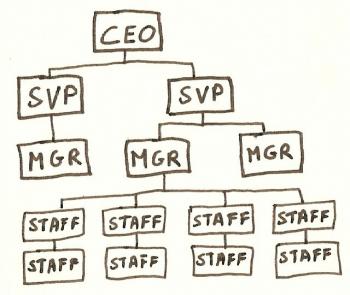On Philanthropy - Future Nonprofit C-Suiters: Top Traits to Cultivate
 New research charts your path up the nonprofit pyramid
New research charts your path up the nonprofit pyramid
Contributed by AFPSEWI
Milwaukee Business Journal
May 10, 2019 issue
What does it take to become a nonprofit CEO? New research from the Nonprofit Leadership Alliance reveals the common traits.
The news couldn’t have arrived at a better time: 70% of Boomers in nonprofit leadership positions will retire within five years. They will leave behind a sea of junior leaders and a huge nonprofit workforce that now constitutes the third largest in the nation’s economy.
The sector’s future is cloudy, but with every challenge comes opportunity -- if you have what it takes for top leadership.
Here’s what it takes, according to the Alliance:
Preparation
Almost all nonprofit CEOs have a bachelor’s degree; more than half have a graduate degree. Prioritize education as you plan your ascent.
Longevity
Seek management experience – 69% of leaders had it sometime in the average 19 years it took to reach their first CEO position.
Opportunism
Nearly two-thirds of CEOs were hired externally. Of internal hires, the average tenure at the organization was 11 years. Build a network that can alert you to opportunities.
Mobility
More than 40% of CEOs relocated during their career. Consider relocation if it can build critical skills.
Focus
More than half of CEOs shortened their ascent by building a career in a specific mission area. If you move, stick to organizations with similar missions.
Interestingly, the study found that corporate experience added five years to the time it took to become a nonprofit CEO.
Amid the nonprofit leadership shortage, opportunities abound. But no one will succeed by accident. Be intentional, map your pathway – then take your steps to the top!
On Philanthropy appears monthly in the Milwaukee Business Journal for the Association of Fundraising Professionals, Southeastern Wisconsin Chapter. This month’s column is contributed by Doug Diefenbach.
